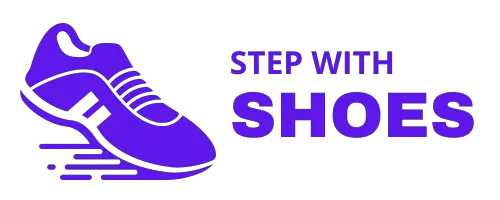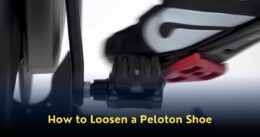Do You Want To Know How to Loosen a Peloton Shoe?
we’re delving into the overlooked art of loosening your Peloton shoes—a skill that can transform your ride from a constrained workout to a liberating experience. We’re not just talking about comfort here; we’re talking about unlocking a new realm of possibility, where every spin of the pedal is an assertion of your control over the bike, your body, and your fitness journey.
I’m Tarek Rahman, and I’ve embarked on a personal journey to not just ride my Peloton but to truly unleash its full potential by customizing the fit of my Peloton shoes. I’m excited to share my insights and experiences on how to expertly loosen Peloton shoes.
What’s Up with Peloton Shoes?
Peloton shoes are like the cool sidekick for your Peloton bike, designed to make your cycling sessions smoother and more effective. They come in different styles, from sporty to casual, and are known for their snazzy three-bolt cleat system that hooks securely onto your bike pedals. These shoes are made to be comfy and breathable, ensuring you can pedal away without feeling like your feet are in a sauna.
Why Shoe Fit Matters in Your Peloton Ride
Let’s talk real talk—wearing the wrong shoes can turn your cycling joyride into a pain party. A good fit isn’t just about comfort (though that’s crucial). It’s also the secret sauce for top-notch performance. Picture this: well-fitted shoes mean your feet stay put, preventing blisters, numbness, and other uninvited guests. Plus, the right fit helps your leg muscles do their happy dance, making your pedal game strong.
Let’s Get Comfy: Loosening Up Your Peloton Shoes
Now, here’s the deal. You’ve got those stylish Peloton shoes, but they might feel a tad snug at first. Don’t panic! This blog is your guide to making them your best cycling buddies. We’re not talking drastic changes – just some easy-breezy tips on adjusting, breaking them in, and finding that sweet spot where snug meets comfy. It’s all about making your Peloton experience a joyride, minus the uncomfortable shoe hiccups.
Crafting content that’s easy on the eyes and ears (or in this case, the virtual screen) is key. So, grab your Peloton shoes, kick back, and let’s dive into making your cycling experience the best it can be!
Understanding Peloton Shoes
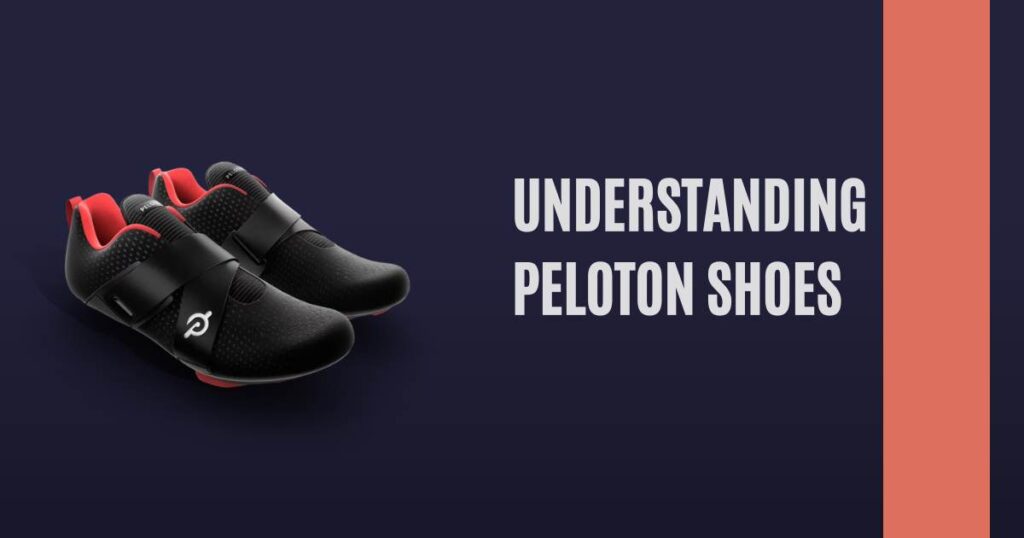
Types of Peloton Shoes Available
When it comes to Peloton shoes, you’ve got options! Picture it like choosing the perfect pair of sneakers. Peloton offers two main types: Delta and SPD cleats. Delta cleats have three holes, like high-performance road cycling shoes, providing a solid connection for serious power. On the flip side, SPD cleats with two holes offer a balance between biking efficiency and comfortable walking, making them great for various activities. Understanding the cleats is crucial because they determine how your shoe connects to the pedal.
Now, think about the style and closure system – some Peloton shoes have laces, offering a classic, customizable fit. Others use Boa dials or Velcro straps for quick adjustments. Picking the right type that matches your cycling style and fits your feet well is the first step to a comfy and efficient ride.
Importance of a Snug Fit for Efficient Cycling
Let’s talk about why your Peloton shoes need to fit just right. Imagine if your shoes were too loose – it’s like trying to run in flip-flops. Not good, right? A snug fit means your feet get the support they need, and when you pedal, that power from your legs goes straight to the bike. No energy wasted! A proper fit also stops your feet from moving around too much, preventing blisters and discomfort during those longer rides.
But, hold up – too tight is a problem too! If your shoes are squeezing your feet too much, it can make them numb or tingly, and that’s no fun. It might even mess with your pedal stroke, making your workout less effective. The goal is to find that sweet spot – snug but comfortable – for the best Peloton experience.
Common Issues with Overly Tight Peloton Shoes
Now, let’s chat about the problems that can pop up if your Peloton shoes are too tight. Ever worn shoes that pinch? Ouch! Tight shoes can make your feet hurt during a workout, especially the longer ones. They might even mess with your blood flow, making your feet feel all weird and tingly. Plus, super tight shoes can throw off how your foot connects with the pedal, and that’s not good for your knees or joints.
So, here’s the deal – if your shoes are causing any discomfort, it’s time to make some adjustments. Your Peloton workout should feel good, not painful. Finding the right fit is like finding the perfect playlist – it makes the whole experience better. Keep tweaking until your shoes feel just right, and you’ll be riding in comfort and style!
Signs Your Peloton Shoes Are Too Tight
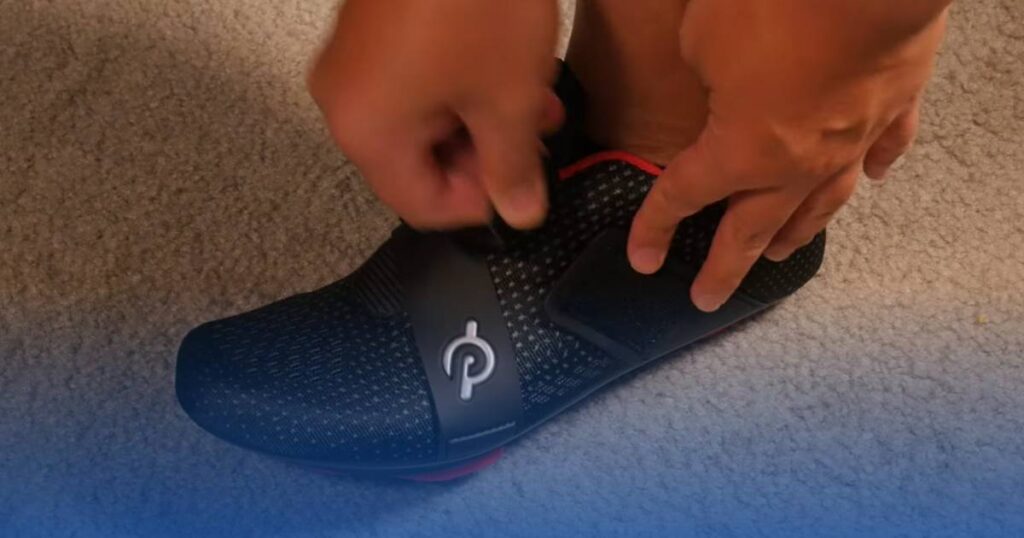
Discomfort during Rides
Let’s talk about your comfort level during those Peloton rides. If you’re feeling discomfort, like your shoes are squeezing a bit too tight, it’s a sign that adjustments are needed. We all want our workouts to be enjoyable, right? Constantly fidgeting with your feet or feeling pressure can take away from the fun. It’s like trying to dance in shoes that don’t fit quite right – not ideal. So, if your Peloton shoes are cramping your style, it’s time to make them a bit more comfortable.
Numbness or Tingling in the Feet
Have you ever experienced that pins-and-needles feeling or numbness in your feet after a ride? It’s not something to brush off. Those tight shoes might be causing it. Tight shoes can squeeze your feet too much, messing with blood flow and nerves. Think of it like a too-tight handshake – it’s uncomfortable, and if it goes on too long, it can cause more significant issues. So, if your feet are sending you signals, it’s time to listen and give those shoes a bit more breathing room.
Difficulty in Maintaining Proper Cycling Form
Maintaining the right form during your Peloton sessions is crucial for a good workout. Imagine trying to dance the salsa when your shoes aren’t letting you move your feet properly – it just doesn’t work. Similarly, tight Peloton shoes can mess with your cycling form. They might force your feet into awkward positions, impacting how you pedal and your overall posture. We want to avoid the virtual equivalent of tripping over our own feet, right? So, let’s make sure those shoes aren’t throwing off your groove.
Potential Long-term Consequences of Improperly Fitted Shoes
Now, let’s chat about the long game. If your Peloton shoes are consistently too tight, it’s like wearing shoes that pinch every day. Ouch. This can lead to more than just immediate discomfort – we’re talking about potential foot issues like bunions or stress fractures. It’s like the difference between a temporary blister and a nagging pain that won’t go away. Taking care of your feet now means you’ll be dancing (or cycling) happily for years to come. So, let’s give those feet the space they need and keep the long-term health of your tootsies in mind.
Adjusting Peloton Shoe Straps
Finding the Right Fit: Straps for Happy Feet
Let’s talk about making your Peloton shoes feel like they were custom-made for your feet. Those handy straps on your Peloton shoes? They’re not just for show – they’re your ticket to comfort and optimal support during your rides.
Imagine your foot as the VIP, and the straps as the bouncers at the entrance of a club. You want those bouncers (straps) to position themselves just right, ensuring a snug but not too tight fit. Start by placing the ball of your foot where the shoe is widest. Tighten the straps across the top of your foot, distributing the pressure evenly. It’s like giving your feet a reassuring hug rather than a tight squeeze.
Gradual Tweaks for the Perfect Ride
Now, let’s talk about adjustments. Finding the perfect fit is a bit like fine-tuning a radio station for the clearest signal. Start with a snug fit, not too tight, not too loose. Take it for a spin, or should I say a ride. Notice any discomfort or pressure points? No worries, we’re in no rush. Make tiny adjustments to the straps, and give it another go. It’s like breaking in a new pair of sneakers – a little discomfort at first, but it gets better over time. Don’t rush the process. Ride for shorter durations, gradually increasing as your feet cozy up to their new home.
Loosen Up: Avoiding the Tightness Trap
Now, here’s where we separate the seasoned riders from the rookies – avoiding the over-tightening pitfall. Think of it like wearing a super snug hat for too long; it might leave a mark, but not the good kind. Over-tightening those straps can squeeze your feet like they’re in a vice, leading to numbness and discomfort. That’s a big no-no. Your feet need room to breathe, or in this case, pedal freely. So, pay attention to how your feet are feeling during your ride. Any numbness or discomfort? Loosen those straps a tad. Your feet will thank you, and you’ll enjoy your ride without feeling like your shoes are plotting against you. Easy on the tightness, heavy on the comfort – that’s the sweet spot.
Choosing the Right Size Peloton Shoes
Choosing Peloton shoes that fit just right is like picking the comfiest pair of sneakers for your favorite workout. It’s not just about preventing blisters and discomfort—proper sizing can actually boost your cycling performance. Imagine your feet as the engines power your ride; they need the right support to keep you cruising comfortably.
Measure Smart, Ride Happy
Getting the right size starts with a simple DIY measurement. Grab a piece of paper, trace your foot, and measure from your longest toe to your heel. Easy, right? Peloton has sizing charts to make it even simpler. And hey, don’t forget to account for the width of your feet. Some Peloton shoes even come in different widths for that custom-made feel.
Size Isn’t One-Size-Fits-All
Now, numbers are essential, but so are your preferences. Some folks like their shoes snug for that extra power, while others prefer a bit of room for a cozy ride. Think about the socks you’ll wear—yes, it matters. If you’re torn between sizes, go a tad bigger. Tight shoes aren’t your workout buddies. And remember, your feet might swell a bit during exercise, so plan for that extra wiggle room. Lastly, check out what other riders are saying in reviews; real-life experiences are golden.
Crafting content for humans means keeping it relatable, and in the world of SEO, using words like “comfort,” “performance,” and “support” helps Google understand your content. So, let’s pedal through this journey of finding the perfect Peloton fit together!
Breaking In Your Peloton Shoes: Ensuring Comfort for Your Cycling Adventures
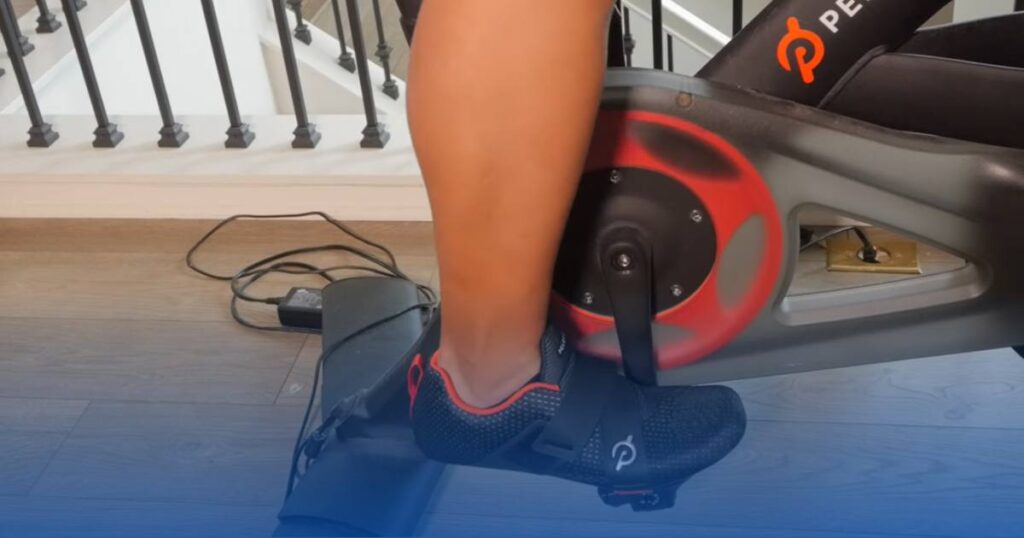
The Need for Breaking In:
Getting your new Peloton shoes to be your feet’s best friend is a bit like breaking in a new pair of sneakers. It’s super important. Think of your Peloton shoes as your trusty sidekick for those intense cycling sessions. Breaking them in helps soften the material around your toes and heels, making sure they snugly fit your unique foot shape. This isn’t just about comfort—neglecting this step might lead to blisters and a not-so-fun time on the bike. So, before you hop on, give your shoes the TLC they deserve.
Easy Moves for a Happy Fit:
Breaking into your Peloton shoes doesn’t have to be a chore. Try some simple exercises that flex the shoes without causing any discomfort. Lift those toes up and down, give your feet a little wiggle—whatever feels natural. And here’s a cool trick: wear your Peloton shoes for short stints during everyday activities like walking or standing. This helps them get used to your moves without the intensity of a full-on cycling workout. It’s like a warm-up for your shoes!
Take It Easy, Then Go Big:
Now, onto the fun part—riding! Start with short cycling sessions and slowly crank up the time as your shoes adjust. This gradual approach is like introducing your shoes to the world of cycling at their own pace. Feel any discomfort or weird spots? Take note. This way, you can make small adjustments to ensure a perfect fit. It’s all about finding that sweet spot where your Peloton shoes feel like they were made just for you.
In a nutshell, breaking in your Peloton shoes is like introducing them to your foot’s unique dance. The more you let them groove with your movements, the better they’ll support you during those intense rides. So, be patient, follow these easy steps, and get ready for a comfy and exciting cycling journey with your Peloton shoes!
DIY Solutions for Loosening Peloton Shoes
Using a Shoe Stretcher:
When your Peloton shoes feel a bit too snug, one handy trick is to use a shoe stretcher. This nifty tool is like a gentle magic wand for widening and lengthening your shoes to match your unique foot shape. Simply slide the shoe stretcher into your Peloton shoes, adjusting it carefully to avoid overdoing it. Leave it in for a few hours or overnight, and voilà! Your shoes will gradually adapt, providing a more comfy and tailored fit. This is especially great for folks with wider feet or if you’re feeling a bit squeezed in certain spots. Just remember, slow and steady wins the race with this method.
Wearing Thick Socks During the Breaking-In Period:
Imagine breaking in your Peloton shoes like breaking in a new pair of jeans – it takes a bit of time and patience. Slip on a pair of thick, cozy socks to give your feet some extra cushioning during the initial breaking-in phase. This not only creates more room inside your shoes but also helps them mold to the unique contours of your feet. While you’re rocking those thick socks, hop on your bike for short rides to speed up the process. As your Peloton shoes become more accustomed to your feet, you can gradually switch to thinner socks for a custom fit that feels just right.
Applying Heat to Soften the Shoe Material:
Here’s a trick to make your Peloton shoes more flexible and comfy – apply a bit of heat. Grab your trusty hairdryer on a low or medium setting and give your shoes a gentle warm-up, paying extra attention to any tight spots. The heat makes the shoe material softer and more adaptable to your foot’s shape. Once warmed up, slip your shoes on and wear them for a short period, letting them cool and settle into the perfect fit. Just a heads up – be careful not to overheat or damage your shoes during this process. It’s a gradual game, but regular heat sessions, combined with short cycling stints, can make your Peloton shoes feel like they were custom-made for you.
Common Mistakes to Avoid
Don’t Skimp on Shoe Fit
When it comes to your Peloton shoes, it’s tempting to go for looks over comfort. However, overlooking the importance of a proper fit can turn your cycling sessions into a painful experience. It’s not just about aesthetics; ill-fitting shoes can lead to discomfort and even long-term foot issues. Prioritize comfort and support over style to ensure your Peloton shoes enhance, not hinder, your rides.
Listen to Your Feet, Seriously!
Ignoring discomfort in the hope that it’ll magically disappear is a big no-no. While shoes might need a bit of breaking in, persistent pain is a red flag. Brushing it off can lead to more than just blisters; it might result in injuries that keep you off your bike. Take the time to fine-tune your shoe fit, experiment with adjustments, and don’t hesitate to seek advice. Your feet will thank you for it, and you’ll enjoy your rides much more.
Easy Does It: Avoid Drastic Changes
We get it; when your feet are crying out for relief, the temptation to make big adjustments is strong. However, be cautious not to compromise your cycling performance in the process. Drastic changes, like overly loosening straps or modifying your shoes on a whim, can throw off your pedaling efficiency and even lead to injuries. Opt for gradual adjustments, find the right balance, and enjoy both comfort and optimal performance during your Peloton workouts. Your cycling journey should be a joy, not a pain!
Seeking Professional Assistance
Get Personalized Help from Peloton Support
If you’re struggling to loosen up your Peloton shoes, don’t hesitate to connect with Peloton’s customer support. These folks are like your personal coaches but for shoe comfort. Share your discomfort details, and they’ll guide you on tweaking your shoe setup. Whether you’re a seasoned rider or just starting, their experts can help you find that sweet spot of snugness without sacrificing your ride’s performance. It’s like having a shoe-fitting expert at your fingertips.
Swing by Your Local Bike Shop for Pro Tips
Take a trip to your friendly neighborhood cycling shop for some hands-on assistance. These pros are like the superheroes of shoe fitting. They can check your foot shape and suggest Peloton shoes that match your unique anatomy. The cool part? You get to try different options and make real-time adjustments for that perfect fit. It’s a bit like trying on shoes in a store, but with experts giving you advice. Your local bike shop can turn your Peloton shoes into your cycling sidekick.
Spice It Up with Custom Insoles or Shoe Makeovers
If your Peloton shoes are still giving you grief, consider custom insoles or a shoe makeover. Custom insoles are like VIP treatment for your feet, providing extra support and comfort. They’re fantastic for those with funky foot shapes or specific issues. And if your shoes need a bit of tweaking, pros can help with stretching or heat-molding to make them feel just right. It might cost a bit extra but think of it as an investment in happy feet for your cycling adventures. These adjustments can turn your Peloton shoes into a custom-fit dream.
Remember, your Peloton shoes are meant to enhance your ride, not hinder it. So, whether you’re dialing Peloton support, chatting with local bike shop experts, or giving your shoes a little custom TLC, you’re on your way to a more comfortable and enjoyable cycling experience. Happy riding!
Absolutely, let’s rephrase the “Conclusion” section in a more reader-friendly and SEO-friendly manner:
Conclusion
Recap of Key Points
So, in a nutshell, making sure your Peloton shoes fit just right is super important for a comfy and effective cycling experience. We’ve talked about tweaking the straps, picking the right shoe size, and breaking in your shoes properly. These are the keys to solving any tightness or discomfort issues. Remember, a snug fit isn’t just about feeling good—it’s also about making sure your workouts are powerful and avoiding problems like numbness during rides.
Emphasizing the Importance of Comfort
Comfort is a big deal when you’re cycling, and your Peloton shoes are a crucial part of that comfort equation. Discomfort, whether it’s from too-tight straps or shoes that need breaking in, can really take away from the fun of your workouts. By focusing on comfort, you’re not just making your rides more enjoyable—you’re also boosting your overall performance. Take your time making those small adjustments, so your Peloton shoes feel like they belong on your feet, not causing any pain.
Encouraging Readers to Prioritize Foot Health and Performance
Let’s talk about foot health because, in the world of cycling, happy feet mean a happy ride. Don’t ignore your feet; they’re the link between you and your bike. Regularly check how your shoes feel, pay attention to what your body is telling you, and be proactive about making changes. Whether you’re trying out DIY fixes or getting expert help, investing in your foot well-being is a smart move. It means more enjoyable rides, better workouts, and a happier you.
So, as you wrap up here, remember that your Peloton shoes should make your rides better, not worse. With the tips in this guide, you’re on track for countless awesome rides in the future.
